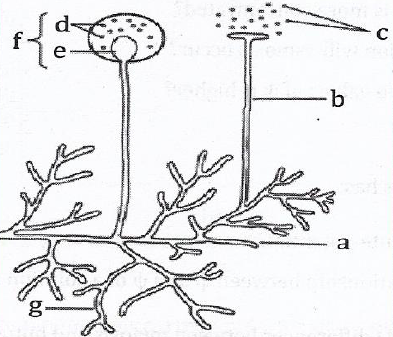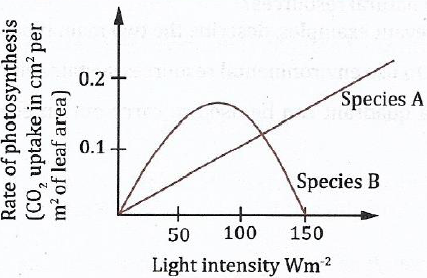THE UNITED REPUBLIC OF TANZANIA NATIONAL EXAMINATIONS COUNCIL
ADVANCED CERTIFICATE OF SECONDARY EDUCATION
EXAMINATION
133/2 BIOLOGY 2
For Both School and Private Candidates)
Time: 3 Hours Tuesday, 15th February 2011 p.m.
Instructions
1. This paper consists of eight (9) questions in sections A. B and C
2. Answer five questions by choosing at least one (I) question from each section.
3. Each question carries twenty (20) marks.
4. Except for diagrams that must be drawn in pencil, all writing should be in blue or black ink.
5. Cellular phones are not allowed in the examination room.
6. Write your Examination Number on every page of your answer booklet(s).
SECTION A
1.Besides vitamins and hormones which occur only in certain cells in small amounts, list three (3) other most common but important substances of a cell. For each substance, indicate the chemical composition and two sites for production as shown in the table below.
| Substance | Site of Production | Chemical Composition |
| 1. |
|
|
| 2. |
|
|
| 3. |
|
|
| 4. |
|
|
(ii) From the chemical composition shown above, list four main chemical elements which constitute a living matter.
View Ans
(b)"Enzymes are highly specific". Explain this concept giving a relevant example.
View Ans
2. Study figure 1 and answer the questions that follow.

Figure 1
(a) Identify the organism in Figure 1 and name the structures labelled a - g.
View Ans
(b) Discuss the adaptations of the organism in Figure 1 to its mode of life.
View Ans
SECTION B
3.(a) Define:
(i)Taxis
(ii)Nasties
View Ans
(b)Why are tactic movements very important to life and the existence of organisms?
View Ans
(c)What are the differences between hormonal and nervous control in animals?
View Ans
4.(a) Explain briefly the role of the following in digestion.
(i)Columnar epithelium
(ii)Secretin hormone
(iii)Cholecytoskinin (Pancreozymin) (CCK — P2) hormone
(iv) Enterogastrone hormone.
View Ans
(b) Figure 2 shows the rate of photosynthesis in two species of plants at different intensities.

Figure 2
(i)Which species show the best adaptation to shady conditions? Give reasons for your answer.
(ii)Apart from light intensity, mention one other way in which light in a shady area differs from that in sunny area.
(iii)Many plant species that grow in the shade have low rates of respiration. What is the possible advantage of this?
View Ans
5.(a) Explain why in cold weather humans produce more dilute urine than in hot weather.
View Ans
(b)What advantages do mammals have in using urea as a nitrogenous waste product?
View Ans
6.(a) State the role(s) of the following structures:
(i)Casparian strip
(ii)Transfer cells in a leaf
View Ans
(b)Giving examples, distinguish closed circulatory system from open circulatory system.
View Ans
7.(a)Describe the formation of a pollen grain and embryo sac in a flowering plant.
View Ans
(b)Explain how non-endospermic seeds develop.
View Ans
SECTION C
8. (a)Define "Selection" as applied in evolution studies.
View Ans
(b)Explain how the following support the theory of organic evolution.
(i) Comparative embryology
(ii) Palaeontology
(iii) Taxonomy
View Ans
9. (a) (i) What are natural resources?
(ii) Using relevant examples, describe the two main types of natural resources.
View Ans
(b) Why is it wise to use environmental resources sustainably?
View Ans
(c) Explain how a quadrant can be used to carry out an ecological study of a plant species.
View Ans
 For Call,Sms&WhatsApp: 255769929722 / 255754805256
For Call,Sms&WhatsApp: 255769929722 / 255754805256
 For Call,Sms&WhatsApp: 255769929722 / 255754805256
For Call,Sms&WhatsApp: 255769929722 / 255754805256
 For Call,Sms&WhatsApp: 255769929722 / 255754805256
For Call,Sms&WhatsApp: 255769929722 / 255754805256